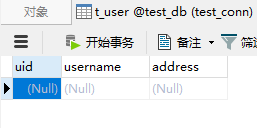整合Spring框架和Hibernate框架
-------------------siwuxie095
整合 Spring 框架和 Hibernate 框架
1、導入相關 jar 包(共 28 個)
(1)導入 Spring 的核心 jar 包和日誌相關的 jar 包(6 個)

Commons Logging 下載鏈接:
http://commons.apache.org/proper/commons-logging/download_logging.cgi
LOG4J 下載鏈接:
https://www.apache.org/dist/logging/log4j/
(2)導入 Spring 的 AOP 開發的 jar 包(4 個)

AOP Alliance 下載鏈接:
http://mvnrepository.com/artifact/aopalliance/aopalliance
AspectJ Weaver 下載鏈接:
http://mvnrepository.com/artifact/org.aspectj/aspectjweaver
(3)導入 Spring 的 JDBC 開發的 jar 包(2 個)

(4)導入

(5)導入 Hibernate 的基本 jar 包(10 個)

其中:
1)hibernate-entitymanager 和其它包不在同一個文件夾下
2)在 Struts2 和 Hibernate 中,都有 javassist,會產生沖突,
選擇高版本,刪除低版本即可
(3)導入 Hibernate 日誌相關的包(2 個)

SLF4J 下載鏈接:https://www.slf4j.org/dist/,其中包含
和 slf4j-log4j
其實,Hibernate 日誌相關的包還包含 log4j,因為在 Spring 中已經
有了,所以這裏就不再添加
(4)導入 MySQL 的 JDBC 驅動的 jar 包(1 個)

mysql-connector-java 下載鏈接:
https://dev.mysql.com/downloads/connector/j/
(5)導入 Spring 整合 Hibernate 的 jar 包(1 個)

「也可用來整合其它 ORM 框架」
(6)導入 C3P0 的 jar 包(1 個)

C3P0 下載鏈接:
http://mvnrepository.com/artifact/c3p0/c3p0
註意:如果使用的是 0.9.1 版本,只需要一個 jar 包即可,如果使用
的是 0.9.2 版本,還需要導入一個輔助包 mchange-commons-java
Mchange Commons Java 下載鏈接:
http://mvnrepository.com/artifact/com.mchange/mchange-commons-java
2、測試
(1)編寫一個實體類
User.java:
package com.siwuxie095.entity;
public class User {
private Integer uid; private String username; private String address;
public Integer getUid() { return uid; } public void setUid(Integer uid) { this.uid = uid; }
public String getUsername() { return username; } public void setUsername(String username) { this.username = username; }
public String getAddress() { return address; } public void setAddress(String address) { this.address = address; }
@Override public String toString() { return "User [uid=" + uid + ", username=" + username + ", address=" + address + "]"; }
} |
(2)在 Hibernate 映射配置文件中進行配置
User.hbm.xml:
<?xml version="1.0" encoding="UTF-8"?> <!DOCTYPE hibernate-mapping PUBLIC "-//Hibernate/Hibernate Mapping DTD 3.0//EN" "http://www.hibernate.org/dtd/hibernate-mapping-3.0.dtd">
<hibernate-mapping>
<class name="com.siwuxie095.entity.User" table="t_user">
<id name="uid" column="uid"> <generator class="native"></generator> </id>
<property name="username" column="username"></property> <property name="address" column="address"></property>
</class> </hibernate-mapping> |
(3)在 Hibernate 核心配置文件中進行配置
hibernate.cfg.xml:
<?xml version="1.0" encoding="UTF-8"?> <!DOCTYPE hibernate-configuration PUBLIC "-//Hibernate/Hibernate Configuration DTD 3.0//EN" "http://www.hibernate.org/dtd/hibernate-configuration-3.0.dtd"> <hibernate-configuration> <session-factory>
<property name="hibernate.show_sql">true</property> <property name="hibernate.format_sql">true</property> <!-- 註意:只有配置 hibernate.hbm2ddl.auto 為 update,才能自動創建表 --> <property name="hibernate.hbm2ddl.auto">update</property> <property name="hibernate.dialect">org.hibernate.dialect.MySQLDialect</property> <!-- 原來的配置: <property name="hibernate.current_session_context_class">thread</property>
在 SSH 框架整合中會報錯,要麽將這個配置刪了,要麽改成如下配置
參考鏈接:http://blog.csdn.net/maoyuanming0806/article/details/61417995 --> <property name="hibernate.current_session_context_class"> org.springframework.orm.hibernate5.SpringSessionContext </property>
<mapping resource="com/siwuxie095/entity/User.hbm.xml"/>
</session-factory> </hibernate-configuration> |
(4)在 Spring 核心配置文件中進行配置
applicationContext.xml:
<?xml version="1.0" encoding="UTF-8"?> <beans xmlns="http://www.springframework.org/schema/beans" xmlns:xsi="http://www.w3.org/2001/XMLSchema-instance" xmlns:aop="http://www.springframework.org/schema/aop" xmlns:context="http://www.springframework.org/schema/context" xmlns:tx="http://www.springframework.org/schema/tx" xsi:schemaLocation=" http://www.springframework.org/schema/beans http://www.springframework.org/schema/beans/spring-beans.xsd http://www.springframework.org/schema/aop http://www.springframework.org/schema/aop/spring-aop.xsd http://www.springframework.org/schema/context http://www.springframework.org/schema/context/spring-context.xsd http://www.springframework.org/schema/tx http://www.springframework.org/schema/tx/spring-tx.xsd">
<!-- 配置 C3P0 連接池 --> <bean id="dataSource" class="com.mchange.v2.c3p0.ComboPooledDataSource"> <property name="driverClass" value="com.mysql.jdbc.Driver"/> <!-- jdbc:mysql:///test_db 是 jdbc:mysql://localhost:3306/test_db 的簡寫 --> <property name="jdbcUrl" value="jdbc:mysql:///test_db"/> <property name="user" value="root"/> <property name="password" value="8888"/> </bean>
<!-- SessionFactory 對象的創建交給 Spring 進行管理 --> <bean id="sessionFactory" class="org.springframework.orm.hibernate5.LocalSessionFactoryBean"> <!-- 因為在 Hibernate 核心配置文件中,沒有數據庫配置, 而是在 Spring 的核心配置文件中進行配置,所以需要 註入 dataSource
LocalSessionFactoryBean 中有相關屬性,所以可以 註入 --> <property name="dataSource" ref="dataSource"></property> <!-- 指定 Hibernate 核心配置文件的位置 --> <property name="configLocations" value="classpath:hibernate.cfg.xml"></property> </bean>
</beans> |
(5)在部署描述文件中進行配置
web.xml:
<?xml version="1.0" encoding="UTF-8"?> <web-app xmlns:xsi="http://www.w3.org/2001/XMLSchema-instance" xmlns="http://xmlns.jcp.org/xml/ns/javaee" xsi:schemaLocation="http://xmlns.jcp.org/xml/ns/javaee http://xmlns.jcp.org/xml/ns/javaee/web-app_3_1.xsd" version="3.1"> <welcome-file-list> <welcome-file>index.jsp</welcome-file> </welcome-file-list>
<!-- 配置 Spring 的監聽器 ContextLoaderListener --> <listener> <listener-class>org.springframework.web.context.ContextLoaderListener</listener-class> </listener>
<!-- 配置 Spring 核心配置文件的位置(路徑) --> <context-param> <param-name>contextConfigLocation</param-name> <param-value>classpath:applicationContext.xml</param-value> </context-param>
</web-app> |
(6)啟動 Tomcat 服務器,發現 MySQL 數據庫中自動創建了表 t_user

前提:
在 Hibernate 核心配置文件中配置了 hibernate.hbm2ddl.auto 為 update
【made by siwuxie095】
整合Spring框架和Hibernate框架
